Rental law reforms – “Minimum Housing Standards” now in effect from 1 September, 2023
For those of you who are landlords, there are new reforms in effect in Queensland. These reforms apply to all residential tenancies and include any house rentals, caravan rentals or rooming accommodation.
Included as part of the reforms are the “Minimum Housing Standards” that came into effect for new tenancies on 1 September, 2023.
These Minimum Housing Standards will come into effect for all remaining tenancies on 1 September, 2024.
The purpose of the Minimum Housing Standards is to ensure that all Queensland rental properties are safe, secure, and functional.
What is a New Tenancy?
A new tenancy is created when a tenant moves into a new premises or renews their existing rental arrangement for their premises from 1 September, 2023.
Example: Fred and Mary sign a new Tenancy Agreement and move into the property on 2 September, 2023. The Minimum Housing Standards apply to their new rental property.
Example: Hugo and Sally have been living in their rental property for 10 years. Their existing rental agreement is due to expire on 1 October, 2023. They sign a new rental agreement commencing on 2 October, 2023. The Minimum Housing Standards now apply to their rental property.
What type of rentals do the Minimum Housing Standards apply to?
It applies to all types of residential tenancies, including:
General tenancies (for a house, unit, rural acreage, etc.),
Moveable dwellings (caravans or land used for caravans), and
Rooming accommodation agreements (where the tenant lives with others in the same dwelling).
What Are the Minimum Housing Standards?
Housing must be:
Weatherproof and structurally sound (this includes the roof and windows to be water-tight; the walls, ceiling and roof must be in good condition; and any decks, stairs or flooring are to be safe and not affected by rot or defects);
In good repair, with fixtures and fittings, including electrical appliances, not likely to cause injury through normal use;
Lockable with functioning locks or latches on all external doors and windows that can be reached without a ladder;
Free from vermin, damp and mould (excluding where it has been caused by the tenant);
Furnished with curtains or other window coverings (including frosted glass) providing privacy in rooms such as bedrooms, bathrooms or such other rooms where privacy is expected. Note: Privacy coverings are not required for windows which are blocked from outside view by a fence, hedge, tree or other feature of the property;
Adequately plumbed with drainage and have hot and cold drinkable water;
Equipped with flushable toilets connected to a sewer, septic tank or waste disposable system;
Equipped with a functioning cook-top (if a kitchen is provided);
Equipped with necessary fixtures for a functional laundry, including tap fixtures and adequate plumbing (if laundry facilities are provided). Note: the laundry does not have to be equipped with a washing machine or other white goods.
Who is Responsible for Mould, Damp or Vermin During a Tenancy?
If these issues are caused by problems with the structure of the property, the owner is responsible for fixing it and making any necessary repairs (at their sole expense).
Example: If the mould is caused by a leaking roof – the owner is required to attend to this repair.
Example: If there are termites in the walls – the owner is required to attend to this repair.
However, if the issue is caused by the tenant, the tenant is responsible for any necessary repairs (at their sole expense).
Example: Mould is caused by tenant allowing steam to build up in the bathroom and not properly ventilating or cleaning the area.
Example: Vermin are attracted to the property because of the tenant’s actions/inactions.
What if the Owner Doesn’t Comply with these Standards?
For a general tenancy (example: a house) there are five possible options for a Tenant:
Option 1
Tenant can move out of the property within the first 7 days of occupancy. To do this, the tenant serves a Form 13 – Notice of Intention to Leave on grounds that the property does not meet the Minimum Housing Standards.
Option 2
Tenant can apply for a QCAT termination order within first 3 months of occupancy. The tenant must first go through the RTA dispute resolution process before going to QCAT.
Option 3
Tenant can request emergency repairs to the property. If they cannot contact the owner or property manager about the repair work within a reasonable timeframe, they can arrange the repairs up to a maximum value of four weeks’ rent and seek reimbursement of this expense from the owner.
Option 4
Tenant can make an urgent application to QCAT for a repair order.
Option 5
Tenant applies for a free RTA dispute resolution about making repairs. The tenant needs to serve a Form 11 – Notice to Remedy Breach on the owner and provide them with a timeframe for the repairs to be fixed. If the owner fails to remedy the breach within the timeframe, the tenant can lodge a dispute resolution request with the RTA.
Any applications to QCAT must be made within 6 months of the owner or tenant becoming aware of a breach of the agreement, so typically quick action is required.
Further information on Rental Law Changes, including the introduction of the Minimum Housing Standards, can be found by visiting the Residential Tenancies Authorities website (https://www.rta.qld.gov.au/rental-law-changes/resources)
If you need assistance, please contact our experienced team for professional advice about your specific circumstances.
The content of this column is to provide a general guide on this topic. Professional advice should be sought about your specific circumstances.



